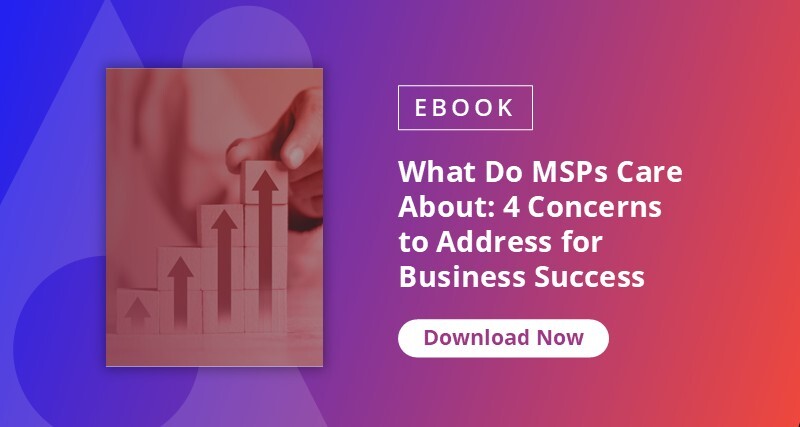In 2025, Canalys expects merger and acquisition (M&A) activity in the managed service provider (MSP) space to grow by 45% and managed services revenue to reach $595 billion globally. The numbers tell a compelling story: This explosive growth shows no signs of slowing. The question is not whether M&A will impact your business, but how ready you are to capitalize on the opportunities that come with it.
This blog covers the factors driving M&A and how MSPs can strategically prepare for acquisitions, be acquired, or simply want to remain competitive in a highly competitive market.
The Current M&A Landscape: Why Now?
Over 53% of channel partners expect a 10% increase in their managed services business, creating attractive targets for acquisition. Several factors drive this M&A wave:
- Scale economics. Larger MSPs can negotiate better vendor terms, spread fixed costs across more clients, and invest in advanced automation and security tools that smaller providers simply can’t afford.
- Talent acquisition. The cybersecurity skills shortage affects every MSP. Acquiring teams with specialized expertise in areas like AI security, cloud architecture, or compliance has become more valuable than trying to build these capabilities organically.
- Geographic expansion. Many MSPs use acquisitions to rapidly expand into new markets without the time and risk of building a local presence from scratch.
- Technology integration. The complexity of modern IT stacks means MSPs need broader capabilities to serve enterprise clients effectively.
Buyers: Building Your Acquisition Playbook
Successful MSP acquisitions start with systematic target identification. Look beyond obvious competitors to find complementary businesses through:
- Peer networks. Professional associations and industry groups often provide insights into which companies might be acquisition-ready.
- Vendor recommendations. Technology partners frequently know which MSPs are struggling or looking for exit opportunities.
- M&A events. Industry conferences and dedicated M&A events provide structured networking opportunities.
By leveraging these sources, MSPs can identify potential acquisition targets. Once identified, it's crucial to create standardized buyer checklists that evaluate these targets on tool stack compatibility, ethical alignments, and strategic fit with your key requirements. A due diligence framework in risk management requires a comprehensive approach to evaluating potential acquisitions:
- Technology assessment. Understanding the compatibility of the toolset is crucial. Will their solutions integrate with yours, or will you need to completely replace their technology stack? This decision affects both client onboarding complexity and staff retention.
- Security posture evaluation. Conduct thorough penetration testing of target applications and platforms. Review their disaster recovery plans, incident response history, and information security protocols. Any history of breaches or cyber incidents could have significant financial and reputational implications.
- AI and automation readiness. Evaluate their AI platforms, security controls, and guardrails. As AI becomes increasingly central to MSP operations, acquiring companies with mature AI capabilities provides competitive advantages.
- Staffing and culture. Assess team sizes, management styles, and cultural alignment. People management approaches must align among organizations to ensure smooth integration.
- Financial health and revenue mix. Analyze the target’s financial statements, including revenue trends, EBITDA margins, debt obligations, and customer concentration risk. Look for recurring revenue streams, diversified client portfolios, and sustainable profit margins. Ensure their pricing model aligns with your go-to-market strategy and won’t create margin erosion post-acquisition.
Sellers: Preparing for Maximum Value
Before pursuing any acquisition, MSPs considering a sale must clearly outline the tool stack and ethical frameworks and ensure their financial house is in order. This means maintaining clean profit and loss statements with a good account structure to show actual business performance. Transparency helps identify compatible buyers and streamlines the due diligence process.
Building Acquisition Readiness
MSPs considering a sale need to understand buyer motivations, whether these are to grow market size, become more competitive, add talent and customers, grab revenue quickly, or achieve purchasing power through bulk negotiations.
MSP must also prepare for the reality of informing staff about potential changes, managing client concerns, and potentially stepping back from day-to-day operations. Here are just a few things to consider:
- Documentation and processes. Ensure all contracts, service level agreements (SLAs), and operational procedures are well-documented. Buyers want to understand exactly what they’re purchasing and how they can maintain service continuity.
- Clean financial records. Separate business and personal expenses, as buyers need clear visibility into the business performance and profit margins.
- Technology stack standardization. Using toolsets similar to those of potential acquirers minimizes complicated relearning and reduces end-client onboarding friction.
- Client retention strategy. Be prepared to communicate how you’ll ensure client stability during and after the transition. Buyers will want confidence that key accounts won’t churn once the sale is announced — especially if your personal relationships have driven retention.
- Key personnel planning. Identify critical team members and have retention plans in place (e.g., stay bonuses, career pathing). Buyers want to ensure that institutional knowledge won’t walk out the door on day one.
- Valuation story and growth levers. Have a clear narrative about what makes your business valuable, whether that’s recurring revenue, vertical specialization, strong gross margins, efficient operations, etc. Know your growth levers and be ready to articulate how a buyer could scale post-acquisition.
- Legal and compliance review. Ensure all licenses, certifications, client contracts, and HR policies are up to date. Any legal ambiguity – such as vague IP ownership or misclassified contractors – can slow or kill a deal.

The Make-or-Break Factor in Integration Excellence
Client retention during MSP acquisitions requires careful planning. Different technology solutions between companies can create significant onboarding work. However, clients are generally happy to move over when connected staff members remain present to provide continuity.
To ensure a seamless client onboarding, develop clear communication strategies emphasizing the benefits clients will receive from the combined organization: expanded service capabilities, improved reliability, and access to advanced technologies they couldn’t afford from smaller providers.
Technology Integration Decisions
One of the most critical decisions in M&As involves integrating acquired solutions into your existing stack or replacing them entirely. This choice influences everything, from staff training to client satisfaction.
The benefits of maintaining similar toolsets include reduced complexity, minimized relearning requirements, and smoother client transitions. However, replacing legacy systems can provide significant opportunities to modernize and improve service delivery.
Cybersecurity Considerations
Given the sensitive nature of MSP operations, partners cannot overlook cybersecurity due diligence. Evaluate the target’s security posture, including their data flow and transfer approach, proprietary information protection, and compliance with industry standards.
It’s equally important to consider engaging third-party security specialists to conduct thorough assessments. The cost of these evaluations pales compared to potential losses from inherited security vulnerabilities or compliance failures.
Operational Continuity
Ensure disaster recovery plans are compatible and comprehensive. Any gaps in business continuity planning could jeopardize client relationships and revenue streams post-acquisition.
To effectively manage a growing number of tech stacks and clients, MSPs must unify solutions into a single pane of glass to help them streamline monitoring, automation, and support — regardless of the number of solutions they’ve acquired across multiple M&As.
The Road Ahead in Protecting Your Investment
The key is preparation, whether you plan to acquire or be acquired. Document your processes, clean up your financials, understand your technology stack’s compatibility with others, and develop clear strategies for integration or positioning.
By viewing M&A as a strategic tool for growth and expansion, MSPs can position themselves at the forefront of the industry, ready to seize new opportunities and deliver unparalleled value to their clients. Start preparing today — the wave isn’t coming; it’s already here.


